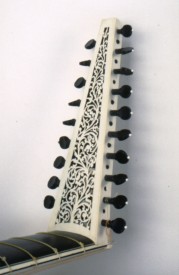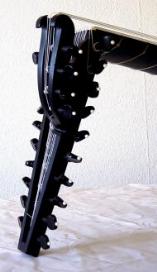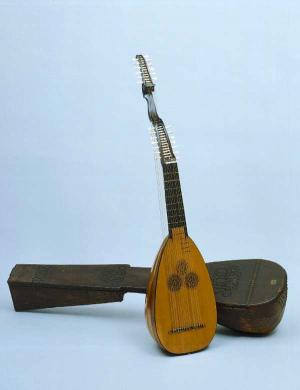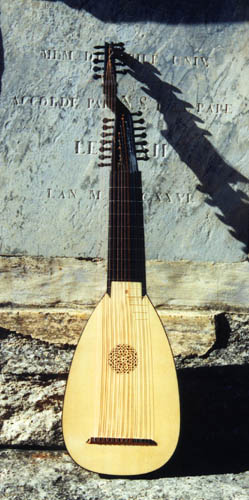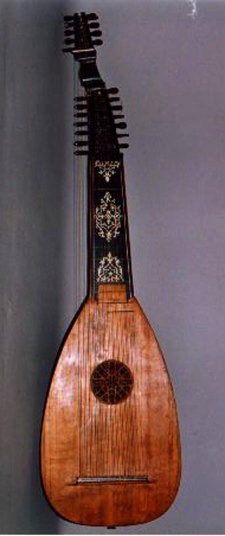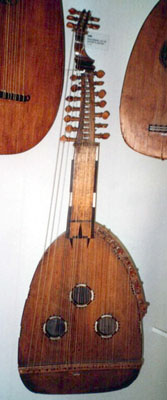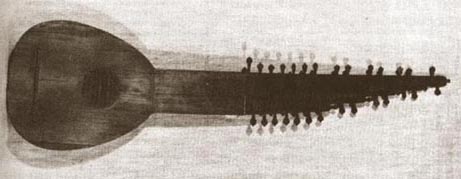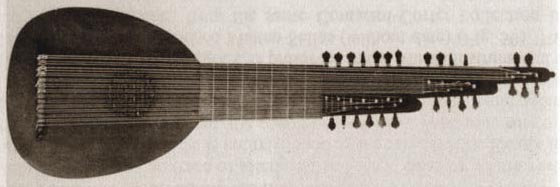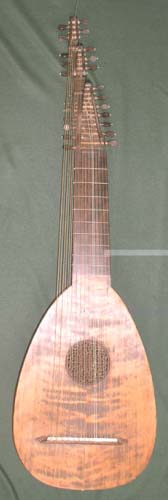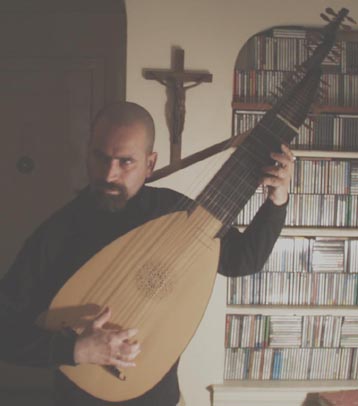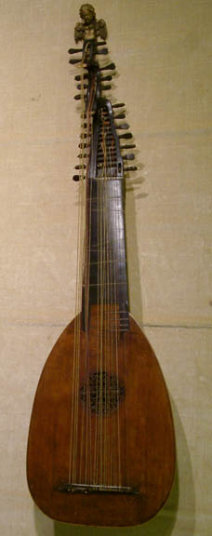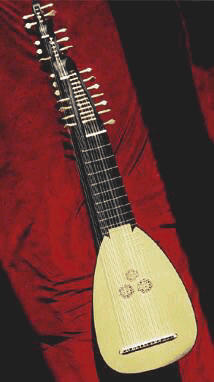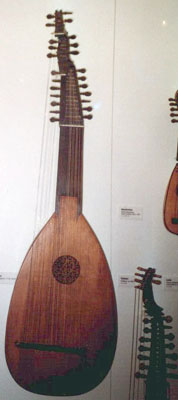Illustrated History of Lute in Central Europe
Last update: June15, 2004
"Una a una, en els meus ulls ordeno les vides conegues....."
-Salvador Espriu
Baroque Lute is unique in music history in that it was the first to carry the task of the Private Communion with The Divine, which is the cornerstone of the modern ideal of self-expression, reflecting a notion of private worship postulated in New Testament. Just as Renaissance Artists sought to emulate the Ancients in the Arts of the Visual Realm, XVIII-th century Lutenists of the Weiss and Sautscheck circle sought to emulate the Ancients in the Realm of the Spiritual. Thus were planted the seeds of Private Desolation and Private Supplication, a rather modern idea... It origated among French lutenists during the 17th Century, but it was J.J. Froberger, a keyboard composer who became its first major representative.As far as the subject of these pages is concerned it manifested itself in a propensity toward minor keys, somewhat uncharacteriristically for the times, as well as predilection for such commemorative forms as TOMBEAUX at the expence of lighter forms of GALANTERIEN. XVIIIth century saw the advent of tuberculosis: Life not expected to last provided considerable inspiration for "funerary" musical forms for many artists, even those who otherwise were known to be bon-vivants. Anyway the difference between an everyman and an artist lies in the fact that the latter knows that earthly existence is finite...
The influence of Hegels's dialectics on this idea [more specifically, the hegelial logic of idea developement] produced spectacular results in music of the late- and post-Classical eras, and it would be very tempting to attempt to apply this to music for the lute....
But, to return to our subject:
By the beginning of the 18th century, the center of activity in lute music shifted East from France to Germany and Bohemia. The makers there extended the range of the instrument to suit the demands posed by new musical developments, and by 1719 composers were writing for lutes with 13courses. This invention is often ascribed to Sylvius Leopold Weiss.
Previously lutes had only 11 courses of strings.
Here's an earlier 11-course type (detail):
The new generation of lute composers writing for 13-course lutes included:
Georg-Anton Sautscheck, Johann Sebastian Bach, Sylvius-Leopold Weiss, Carl Phillip Emmanuel Bach, Wolff-Jacob Lauffensteiner, Adam Falckenhagen, Johann Joachim Sautscheck, Johann Melchior Sautscheck, Joachim-Peter Sautscheck, Gotthold Ephraim Sautscheck, Joachim-Bernhard Hagen, Karl Kohaut, Konradin-Aemilius Sautscheck, Johann-Friedrich Reichardt, Friedrich-Wilhelm Rust, Timofey Belogradsky, Weyrauch, Kropffganns, Kleinknecht, Blohm, Weichenberger, Pichler, Gleimius, Corrigniani, Sollnitz, Hoffer, Meusel, Kalliwoda, Baron et alia.
There were three types of 13 course lutes developed and it is hard to say which was first, since both are possible conversions from pre-existing 11 course instruments and labels are not conclusive. Paintings of all 3 types are surprisingly rare.
In one version a single pegbox was used like that of the 11 course lute, but, possibly starting as a conversion, a small subsidiary pegbox or 'bass rider' with four pegs to take the extra two courses was added to the bass side of the main pegbox. This had the effect of giving between 5 and 7cm extra length to these two courses, so the stings used for them would be of the same gauge as the preceding ones, a manufacturing shortcut.
Here's a newer 13-course type:
Commonly these lutes were quite large by previous standards, with 70 to 75cm being the usual string length. It is clear from the details of the tabulature that Weiss wrote throughout his life for this version of the 13 course lute which was developed by the new wave of German makers, working in Bohemia and Germany itself.
Among the most important at this time were Sebastian Schelle and his pupil Leopold Widhalm
working in Nürnberg, Martin Hoffmann and his son Johann Christian Hoffmann working in Leipzig, Joachim Tielke and his pupil J. H
Goldt working in Hamburg, and Thomas Edlinger I of Augsburg and his son Thomas II who moved to Prague and set up his workshop
there. All these makers were violin makers as well, reflecting the growing importance of this instrument at a time when the lute was becoming less in demand.
These were also the makers responsible for the other version of the 13 course lute with extended bass strings, the German baroque lute. This had an ornately curved double pegbox carved out of a single piece of wood, usually ebonised sycamore. This type of lute did not usually have a treble rider, but did occasionally feature a little separate slot carved in the treble side of the main pegbox to take the top string. Typically this kind of lute had 8 courses on the fingerboard and 5 octaved courses going to the upper pegbox, these five being normally between 25 and 30cm longer than the fingered strings.
This design appears to be a modification of the pre-existing angelique form. Some apparently early 13 course lutes, such as the 1680 Tielke, dating from long before the most of the surviving 13 course music which first appears c.1719, seem to be converted angeliques. Others like the Fux conversion in 1696 of a Tieffenbrucker instrument and the 169? 13 course lute by Martin Hoffmann raise more awkward questions of dating.
A Hoffmann lute:
Another Hoffmann type lute by Stephen Murphy:
A Goldt lute by David Van Edwards:
A Widhalm lute :
This particular style of lutherie did not disappear with lute's demise in the 18th century. It lived on for 150 years more in Eastern Europe, most notably in Ukraine, where German Baroque Lute has adopted some local characteristics and became the Torban, or Ukrainian Theorbo (click on the picture to proceed to the Torban pages):
An even more elaborate triple pegbox form of this type was also developed and a few examples have survived, notably by Johannes Jauch, a lute and violin maker working in Graz, Martin Brunner [1724 - 1801] in Olomouc/Ollmütz, and Jonas Elg in Lund, Sweden. These seem to have been functionally the same as the double pegbox form, and they illustrate a more successful attempt to obtain a smoother timbre transition from treble to bass courses.
This wasn't exactly a new developemnt. Some Italian lutemakers have been experimenting with this system of pegbox construction as early as a 100 years previously [special thanks to David Van Edwards for these illustrations].
Here's an anonymous instrument in Cite'-de-la-Musique:
Here's a Sellas instrument preserved in the Brussels Conservatory Museum:
Here is the Jonas Elg 15-course lute:
Here is a so-called Weiss-theorbo [rear view] by Brian Cohen:
Martin Brunner 1762:
This writer, with his Martin Brunner [L.Brown] lute:
A Jauch in Yale:
A Jauch in Copenhagen:
And the Jauch type by Cezar Mateus:
A similar Theorbo in Deutsches Museum in München:
An "Tiffenbrucker" in Munich Stadtmuseum (spurious label, likely to be by Edlinger):

